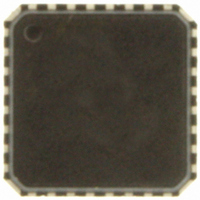ADT7462ACPZ-5RL7 ON Semiconductor, ADT7462ACPZ-5RL7 Datasheet - Page 18

ADT7462ACPZ-5RL7
Manufacturer Part Number
ADT7462ACPZ-5RL7
Description
IC TEMP/VOLT MONITOR 32-LFCSP
Manufacturer
ON Semiconductor
Datasheet
1.ADT7462ACPZ-5RL7.pdf
(81 pages)
Specifications of ADT7462ACPZ-5RL7
Function
Fan Control, Temp Monitor
Topology
ADC, Comparator, Multiplexer, Register Bank
Sensor Type
External & Internal
Sensing Temperature
-40°C ~ 125°C, External Sensor
Output Type
SMBus™
Output Alarm
No
Output Fan
Yes
Voltage - Supply
3 V ~ 5.5 V
Operating Temperature
-40°C ~ 125°C
Mounting Type
Surface Mount
Package / Case
32-LFCSP
Supply Voltage (max)
5.5 V
Supply Voltage (min)
3 V
Maximum Operating Temperature
+ 125 C
Minimum Operating Temperature
- 40 C
Lead Free Status / RoHS Status
Lead free / RoHS Compliant
Other names
ADT7462ACPZ-500RL7
ADT7462ACPZ-500RL7
ADT7462ACPZ-500RL7TR
ADT7462ACPZ-500RL7TR
ADT7462ACPZ-5RL7TR
ADT7462ACPZ-500RL7
ADT7462ACPZ-500RL7TR
ADT7462ACPZ-500RL7TR
ADT7462ACPZ-5RL7TR
Available stocks
Company
Part Number
Manufacturer
Quantity
Price
Company:
Part Number:
ADT7462ACPZ-5RL7
Manufacturer:
ON Semiconductor
Quantity:
135
the #Bytes bits in the Configuration 0 register. The block
read operation consists of a send byte operation that sends
a block read command to the slave, immediately followed by
a repeated start and a read operation that reads out multiple
data bytes, as follows:
checking (PEC), its use is optional. The PEC byte is
calculated using CRC−8. The frame check sequence (FCS)
conforms to CRC−8 by the polynomial.
Consult the SMBus 1.1 specifications for more information.
Alert Response Address
devices that allows an interrupting device to identify itself
to the host when multiple devices exist on the same bus.
output or an SMBALERT. One or more outputs can be
connected to a common SMBALERT line connected to the
Note that although the ADT7462 supports packet error
Alert Response Address (ARA) is a feature of SMBus
The SMBALERT output can be used as either an interrupt
10. The master asserts an ACK on SDA.
11. The master receives the expected number of data
12. The master asserts an ACK on SDA after each
13. The ADT7462 issues a PEC byte to the master.
14. A NO ACK is generated after the PEC byte to
15. The master asserts a stop condition on SDA to end
1. The master device asserts a start condition on SDA.
2. The master sends the 7−bit slave address followed
3. The addressed slave device asserts an ACK on SDA.
4. The master sends a command code that tells the slave
5. The slave asserts an ACK on SDA.
6. The master asserts a repeat start condition on SDA.
7. The master sends the 7−bit slave address followed
8. The slave asserts an ACK on SDA.
9. The ADT7462 sends a byte count telling the
by the write bit (low).
device to expect a block read. The ADT7462
command code for a block read is 0xA1 (1010 0001).
by the read bit (high).
master how many data bytes to expect. The
maximum number of bytes is 32.
bytes.
data byte.
The master should check the PEC byte and issue
another block read if the PEC byte is incorrect.
signal the end of the read.
the transaction.
1
S
A
8
ADDRESS
COUNT
BYTE
SLAVE
Figure 31. Block Read from RAM
9
2
C(x) + x
10
A DATA 1
W A
11
3
0xA1 BLOCK
COMMAND
8
12
READ
A
) x
4
2
) x
DATA
32
A
5
1
S
6
) 1
A
ADDRESS
SLAVE
PEC
13
7
14 15
A
R
P
http://onsemi.com
18
master. If a device’s SMBALERT line goes low, the
following procedure occurs:
SMBus Timeout
there is no SMBus activity for 25 ms, the ADT7462 assumes
that the bus is locked and releases the bus. This prevents the
device from locking or holding the SMBus while the device
is expecting data. Some SMBus controllers cannot handle
the SMBus timeout feature, so it can be disabled.
Configuration Register 3 (0x03)
Bit 1 SCL_Timeout = 1; SCL timeout enabled.
Bit 1 SCL_Timeout = 0; SCL timeout disabled (default).
Bit 2 SDA_Timeout = 1; SDA timeout enabled.
Bit 2 SDA_Timeout = 0; SDA timeout disabled (default).
Temperature and Voltage Measurement
Temperature Measurement
and the temperature of up to three remote thermal diodes.
These diodes can be discrete diode−connected 2N3904/
2N3906s or they can be located on a processor die. Figure 32
shows how to connect a remote NPN or PNP transistor.
Remote Thermal Diode 1 connects to Pin 15 and Pin 16.
Remote Thermal Diode 2 connects to Pin 17 and Pin 18.
Remote Thermal Diode 3 connects to Pin 19 and Pin 20.
the negative temperature coefficient of a diode, measuring
the base−emitter voltage (V
The ADT7462 includes an SMBus timeout feature. If
The ADT7462 can measure its own ambient temperature
A simple method of measuring temperature is to exploit
Figure 32. How to Measure Temperature Using
1. SMBALERT is pulled low.
2. The master initiates a read operation and sends the
3. The device whose SMBALERT output is low
4. If more than one device’s SMBALERT output is
5. Once the ADT7462 has responded to the ARA, the
2N3906
alert response address (ARA = 0001 100). This is
a general call address that must not be used as a
specific device address.
responds to the ARA, and the master reads its
device address. The address of the device is now
known and can be interrogated in the usual way.
low, the one with the lowest device address has
priority in accordance with normal SMBus
arbitration.
master must read the status registers, and the
SMBALERT is cleared only if the error condition
has gone away.
Discrete Transistors
D+
D–
ADT7462
BE
2N3904
) of a transistor, operated at
D+
D–
ADT7462












